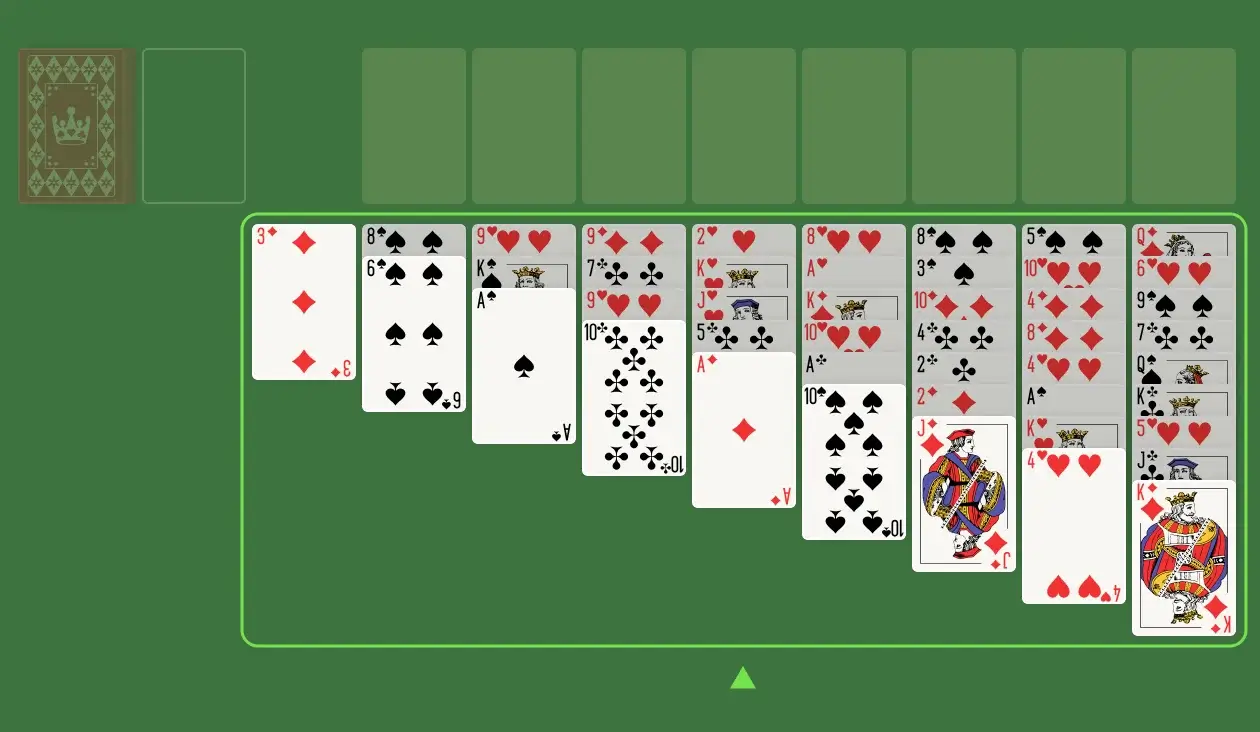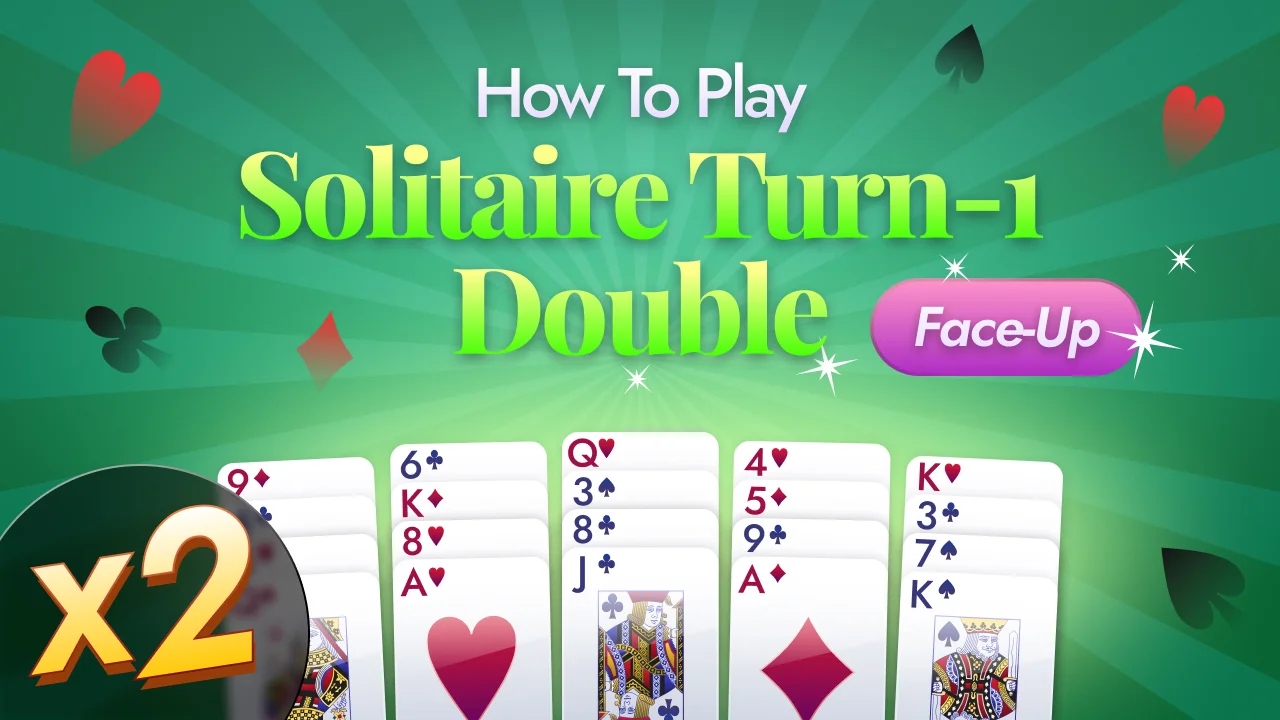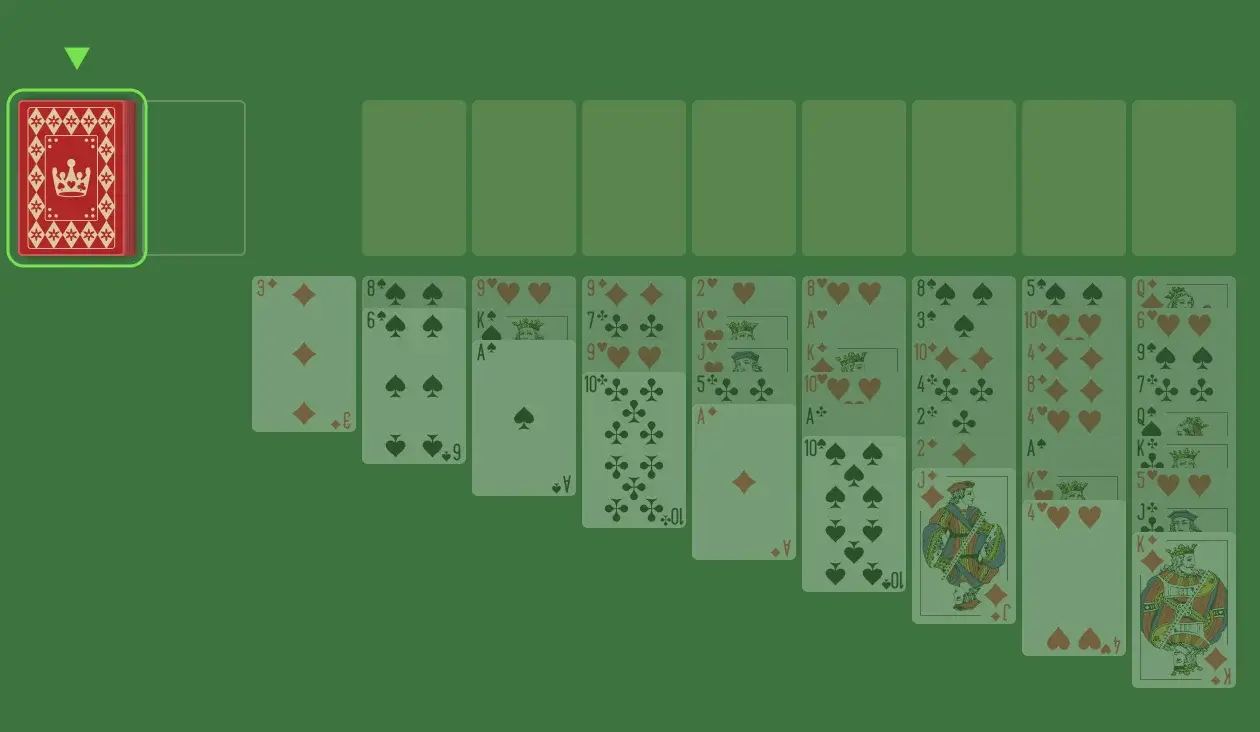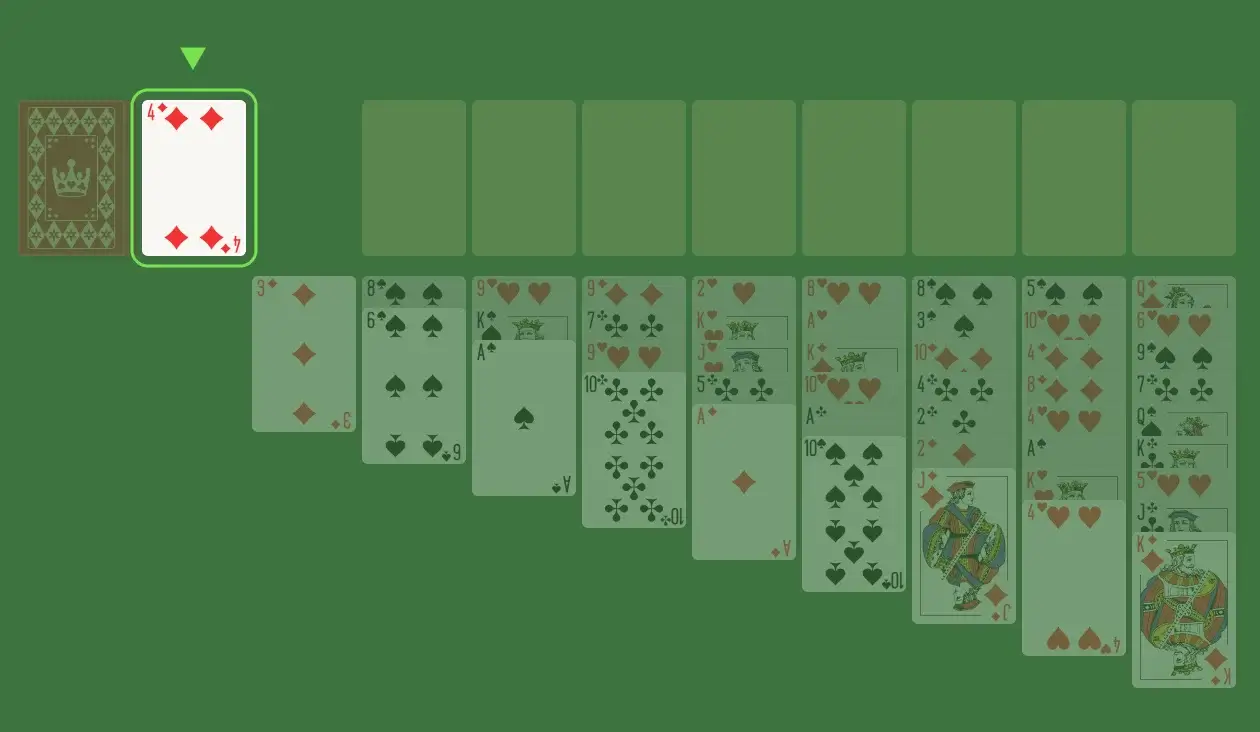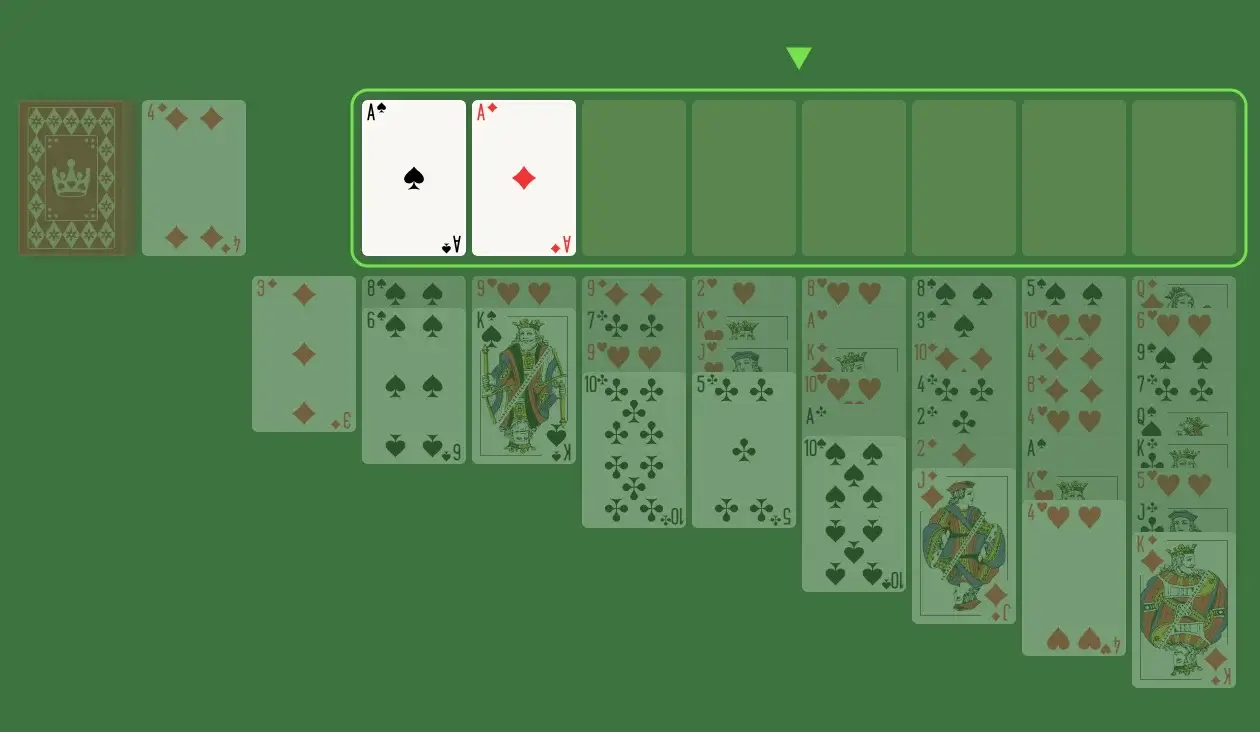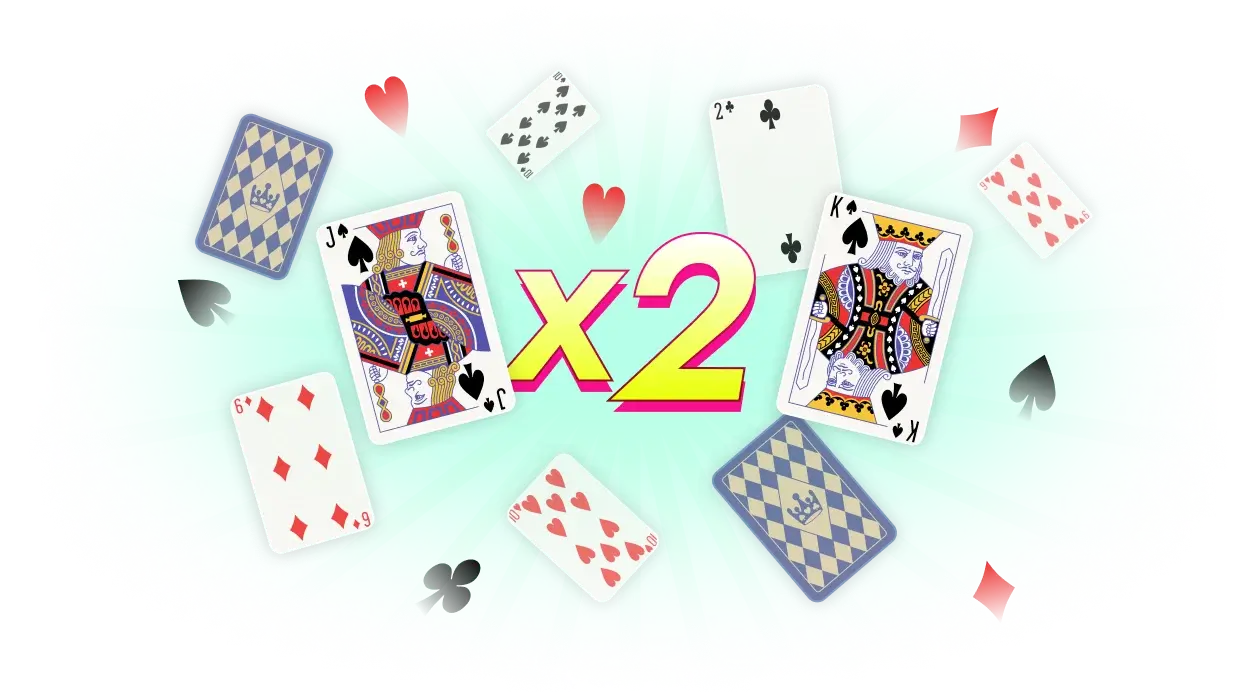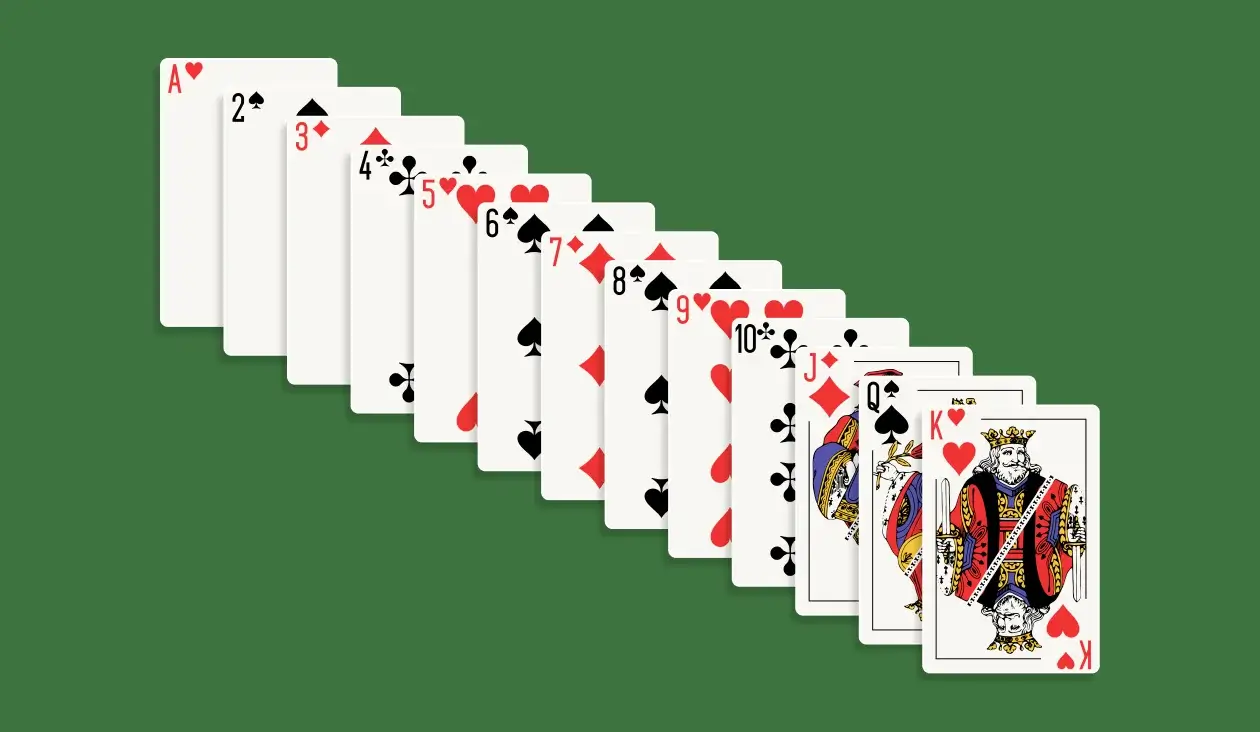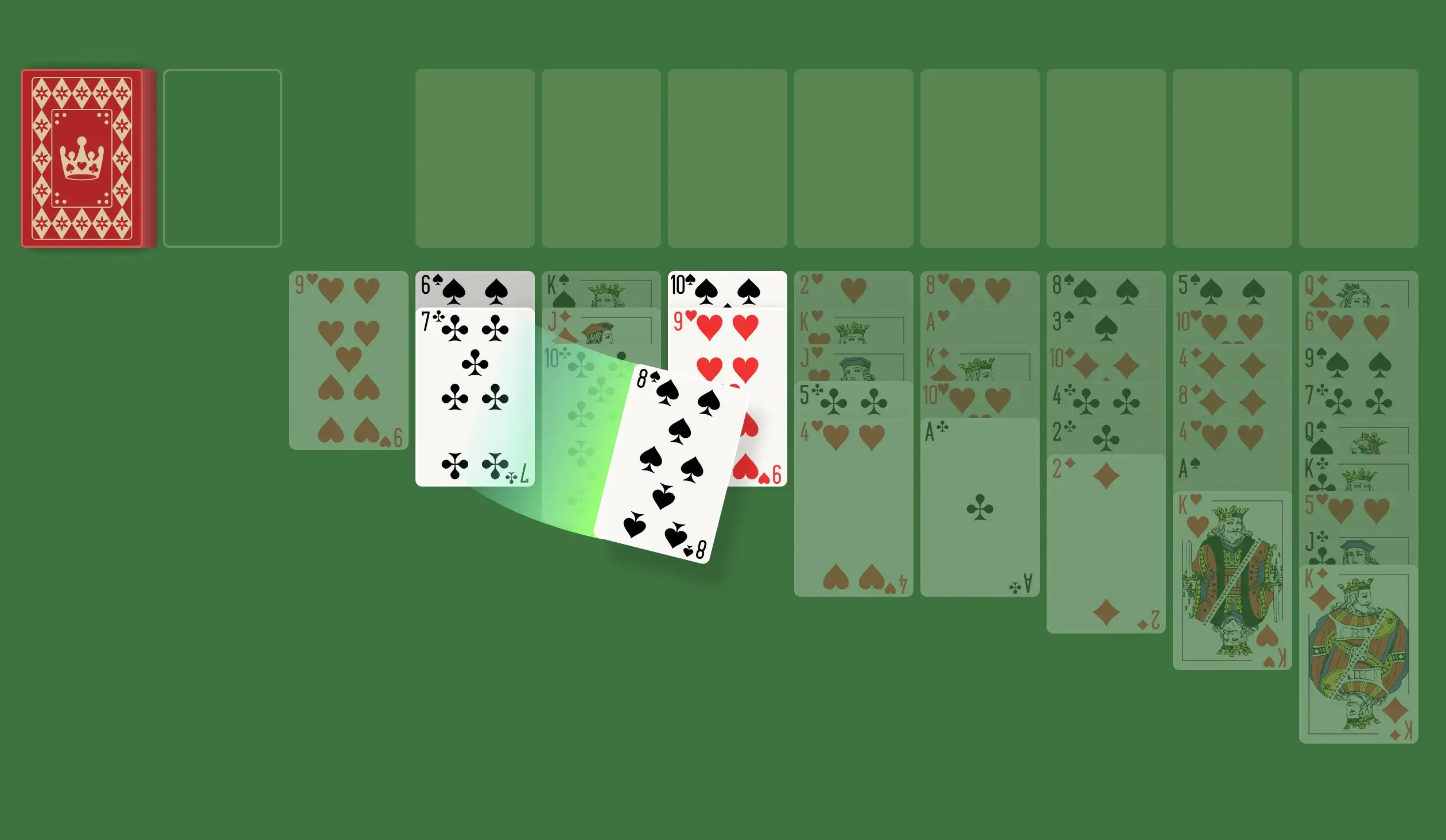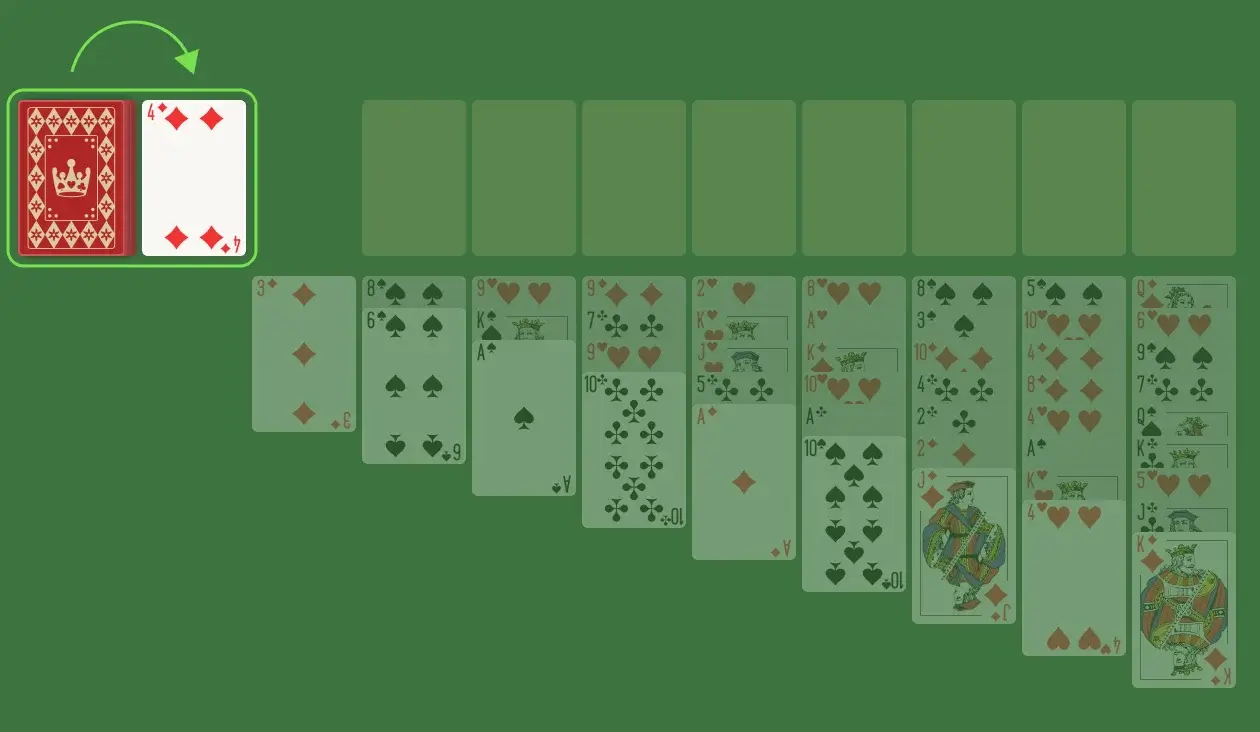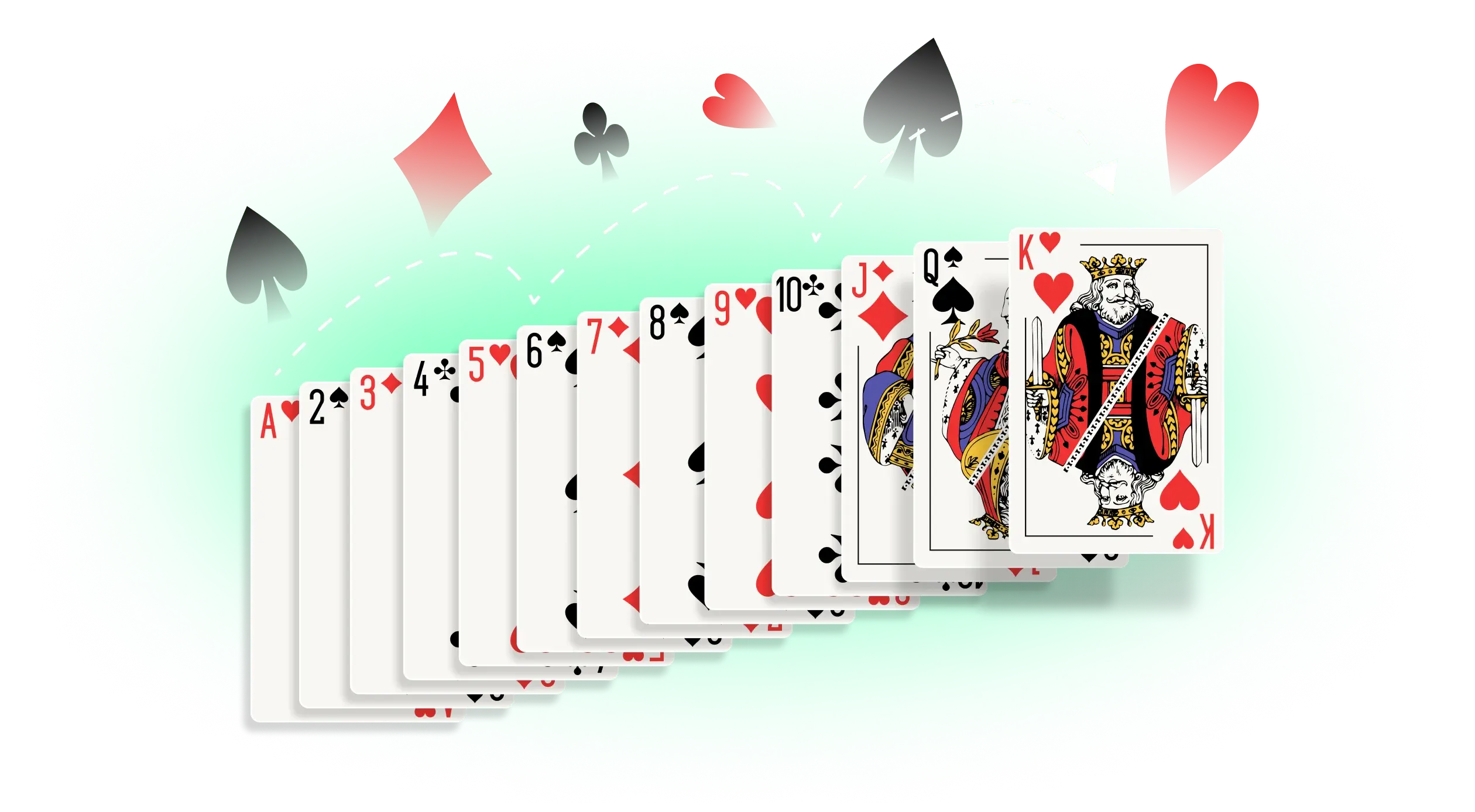1.The Tableau
As the central area of the game, the Tableau divides 45 cards randomly plucked from the deck into nine columns. Each column contains cards equal to the column number, starting from the left. This means that the first column consists of just one card, the second column has two cards, the third column has three, and so on.
